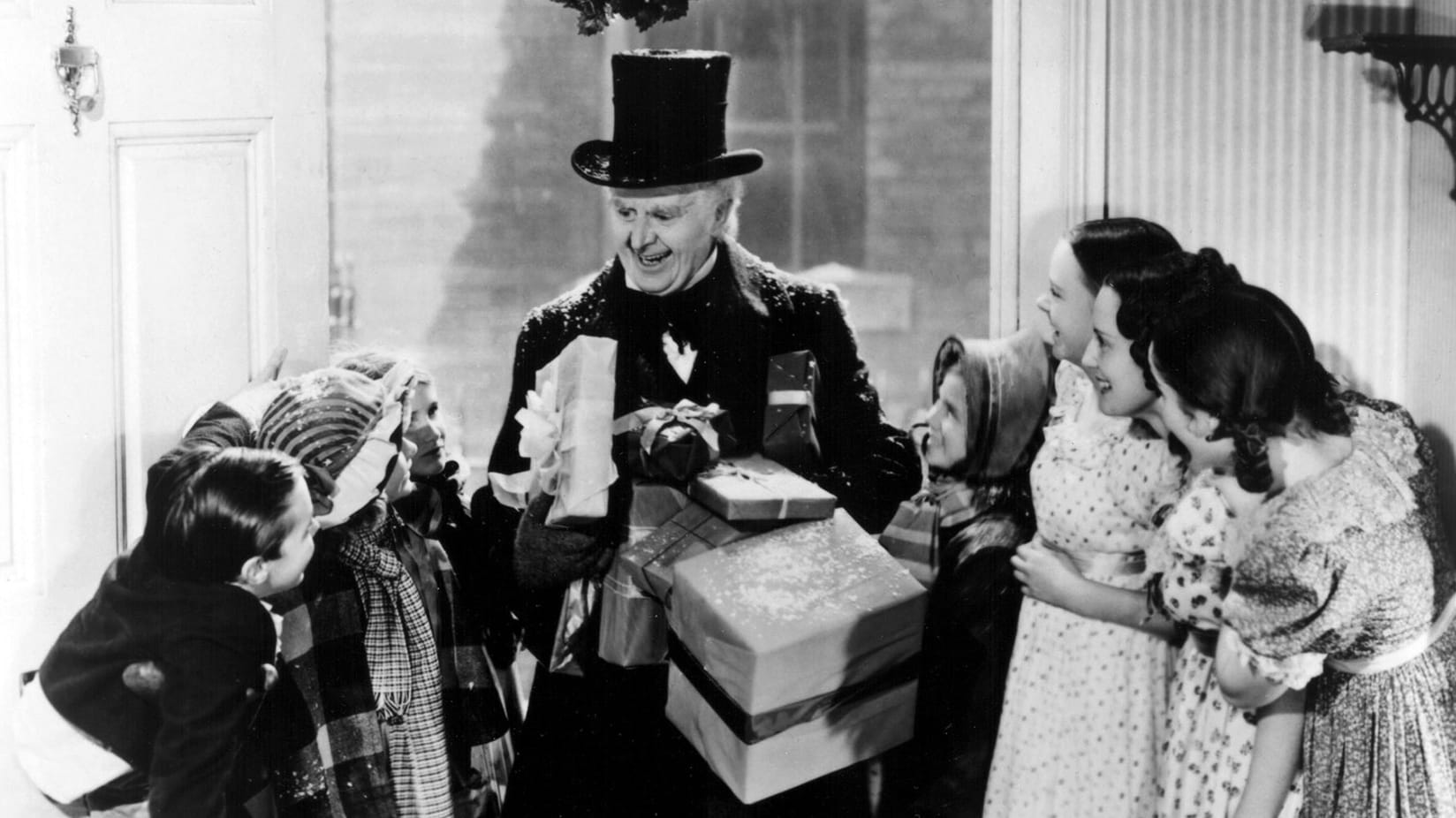TCM Classic Christmas Marathon - 12/18-12/25
Here’s hoping you have yourself a merry TCM Christmas! To that end, we have planned our most spectacular yuletide celebration yet, with an eight-day marathon of 90 movies designed to keep you in the holiday spirit. Every classic-film fan, including this writer, has a list of personal favorites among the movies we spotlight during this season.
I have been writing copy about TCM Christmas movies for 25 years now and have selected the following Top Ten among the films I most enjoy. (The order is chronological.)
A Christmas Carol (1938): My choice among the many film versions of the Charles Dickens classic, possibly because this MGM treatment was the first I ever saw, but also because of its endearing modesty and intimacy. And I consider Reginald Owen’s understated Scrooge to be definitive.
Remember the Night (1940): A definitive and endearing performance by my favorite actress, Barbara Stanwyck. She plays a cynical thief who learns about homey idealism when she makes a holiday trip to rural Indiana with a sympathetic district attorney played by Fred MacMurray.
The Man Who Came to Dinner (1942): A vastly entertaining comedy taken from a 1939 stage hit about a blustery New York radio personality (Monty Woolley) who terrorizes an Ohio family as a live-in guest during the Christmas season. A big part of the fun is identifying the real-life personalities of the day who inspired the various characters like Alexander Woollcott, Noel Coward, Gertrude Lawrence and Harpo Marx.
Meet Me in St. Louis (1944): An utterly irresistible bundle of nostalgia from director Vincente Minnelli, whose adoration of wife-to-be Judy Garland is apparent in every frame. The rest of the cast is equally well-chosen, and the film’s crowning glory is Garland’s peerless rendition of “Have Yourself a Merry Little Christmas.”
Christmas in Connecticut (1945): Stanwyck again, this time in a screwball comedy about a food writer who must live up to her phony reputation as a great cook and homemaker when she’s forced to entertain war hero Dennis Morgan with a holiday dinner. This wacky vehicle dispels any doubt that the great dramatic actress was also a first-rate comedienne.
The Bishop’s Wife (1947): The movies’ two most urbane leading men joined forces in a delightful fable about a guardian angel (Cary Grant) who teaches a staid bishop (David Niven) a thing or two about living. With the lovely Loretta Young in the title role, this trio teaches an object lesson in how to play romantic comedy.
Come to the Stable (1949): Another showcase for Loretta Young at her most luminous, this time as a nun who tries to establish a children’s hospital in a New England town called Bethlehem. In spinning this tale of transcendent faith and dedication, Young is joined by fellow Oscar nominees Celeste Holm and Elsa Lanchester.
Little Women (1949): MGM’s version of the Louisa May Alcott classic, with a quartet of the studio’s most appealing young stars at the time: June Allyson, Elizabeth Taylor, Janet Leigh and Margaret O’Brien. I’ve seen most of the other film and TV adaptations of the book, but this one is frozen in my childhood memories, as perfect as an old-fashioned Christmas card.
Auntie Mame (1958): One of the all-time great screen comedies, with the marvelous Rosalind Russell recreating her stage success in a dazzling Oscar-nominated performance. There’s only one holiday sequence, when Mame and her ragtag little “family” are in the throes of the Depression and decide, in the words of the later stage musical, that “they need a little Christmas.” Maybe not technically a holiday movie, but a real spirit-raiser at any time of year.
The Lion in Winter (1968): The screen version of James Goldman’s brilliant, anachronistic comedy-drama about the fictional Christmas court of 1183, where England’s King Henry II and his estranged wife, Eleanor of Aquitaine, engage in a deadly power struggle. It’s hard to imagine two more thrilling performances than those given by Oscar nominee Peter O’Toole and winner Katharine Hepburn.














